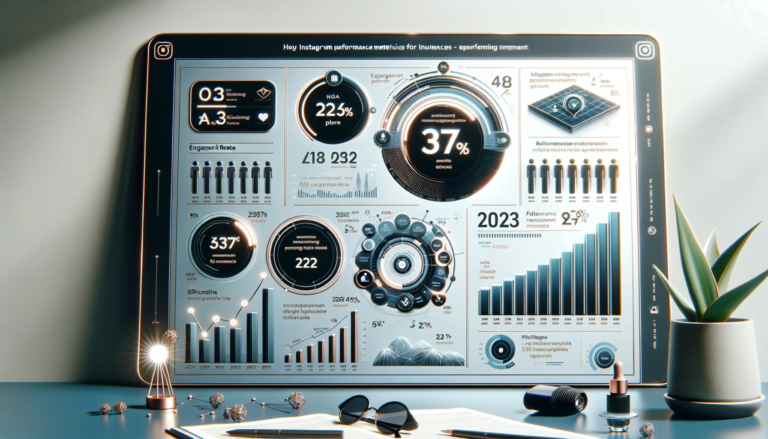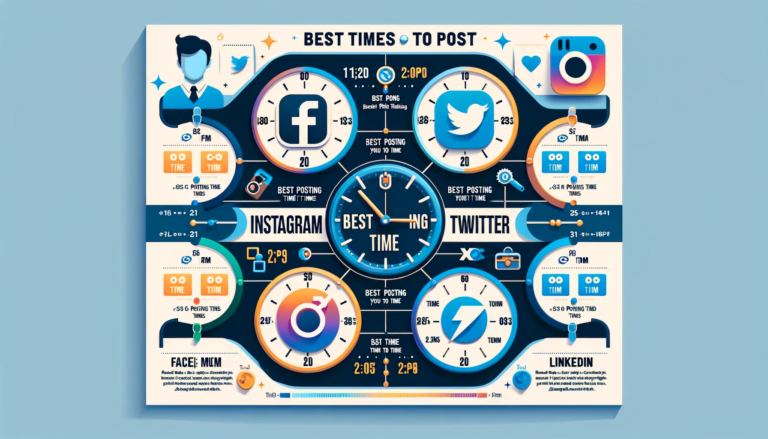In the vast ocean of digital marketing, Backlinks have emerged as crucial anchors, providing stability and direction to your online presence. Particularly in the realm of Backlink Building On Social Media, these backlinks are not just links; they’re bridges connecting diverse platforms, leading to improved visibility and SEO success.
Backlink building for social media platforms involves strategically placing links on social media channels that lead back to your website. It’s a tactic that leverages the power of social networks to increase website traffic, enhance brand visibility, and contribute significantly to search engine rankings.
Why is this important? In today’s digital-first world, social media is more than just a platform for connecting with friends; it’s a potent tool for businesses and individuals to amplify their online presence. Integrating backlink building into your social media strategy can propel your SEO efforts, bringing your content to the forefront of your desired audience.
Understanding Backlinks: From Basics to Advanced Strategies

What are Backlinks?
At their core, backlinks are links from one website to another. In the social media sphere, these are links from social platforms that direct users to your website or blog. However, not all backlinks are created equal. There are two main types:
- DoFollow Backlinks: These are the golden tickets of SEO. They pass on ‘link juice’ and significantly impact your website’s ranking.
- NoFollow Backlinks: Common in social media platforms, they don’t directly influence SEO, but they’re valuable for driving traffic and enhancing visibility.
Quality vs. Quantity
The adage “quality over quantity” rings particularly true for backlinks. A single high-quality backlink can be more powerful than dozens of low-quality ones. Quality backlinks come from reputable, high-authority websites and are contextually relevant to your content.
Good vs. Bad Backlinks
Good Backlinks: These are naturally occurring, coming from reputable sources, and adding value to the user experience. They’re often the result of high-quality content.
Bad Backlinks: These can harm your SEO efforts. They’re often from spammy, irrelevant sources and can lead to penalties from search engines.
The Unique Value of Social Media Backlinks

Social media backlinks are often undervalued in the traditional sense of SEO, but their impact on the broader scope of digital marketing and search engine visibility is profound. Here’s a deeper look into why these backlinks are invaluable:
1. Vast User Base and Diverse Audiences
- Global Reach: Social media platforms host billions of users globally, offering unparalleled exposure.
- Diverse Demographics: These platforms cater to a wide range of demographics, allowing for targeted and broad-reaching marketing strategies.
- Engagement Opportunities: The interactive nature of social media enables direct engagement with audiences, fostering community and brand loyalty.
2. Enhanced Brand Visibility and Credibility
- Brand Storytelling: Social media is an ideal platform for sharing your brand’s story, ethos, and values, which can enhance credibility and attract backlinks.
- Authority Building: consistently providing valuable content on social media can establish your brand as an authority in your niche, encouraging others to cite and link to your content.
- User-Generated Content: Positive mentions and shares by users serve as personal endorsements, further building brand trust and potential for backlinks.
3. Direct and Indirect SEO Benefits
Backlink Building Strategies for Different Platforms
| Social Media Platform | Recommended Strategy | Best Content Types | Key Metrics to Track |
|---|---|---|---|
| Engage with communities, utilize Facebook groups | Images, Video, Stories | Shares, Comments, CTR | |
| Collaborate with influencers, use Instagram Stories | Images, Reels, Stories | Likes, Comments, Story Views | |
| TikTok | Leverage trending challenges, create engaging short videos | Short Videos, Music Clips | Views, Shares, Engagement Rate |
| Publish industry insights, engage in professional groups | Articles, Company Updates, Job Posts | Comments, Shares, Profile Visits | |
| Utilize hashtags, engage in trending topics | Tweets, Images, Polls | Retweets, Likes, Mentions |
Table 3: Average Time Spent on Social Media (Daily)
- Traffic Generation: Even though most social media backlinks are NoFollow, they can drive significant traffic to your website. This increased traffic signals to search engines the relevance and popularity of your site.
- Link Ecosystem: Social media backlinks can lead to organic discovery by bloggers, journalists, and content creators who may then link to your content from their websites, providing valuable DoFollow backlinks.
- Search Engine Recognition: Search engines are increasingly recognizing the importance of social signals. A strong social media presence can indirectly influence your search engine rankings.
4. Rapid Content Distribution and Virality Potential
- Immediate Reach: When you post content on social media, it has the potential to be seen immediately by a large audience, unlike traditional search engine rankings which can take time to build.
- Shareability: The ease with which content can be shared on social media increases the potential for virality, which can lead to a significant influx of backlinks in a short period.
- Hashtag Utilization: Using relevant hashtags can extend the reach of your content beyond your immediate followers to a broader audience interested in that topic.
5. Feedback Loop for Content Optimization
- Audience Insights: Social media platforms provide immediate feedback through likes, comments, and shares, offering valuable insights into what content resonates with your audience.
- Content Refinement: This direct feedback loop allows for rapid refinement of content strategies to better align with audience preferences, potentially increasing the likelihood of backlink generation.
6. Cost-effective marketing and SEO Strategy
- Low Barrier to Entry: Social media platforms offer a cost-effective way to market content and build backlinks, especially beneficial for small businesses and startups.
- Organic Growth Potential: With the right strategy, social media content can achieve organic growth without the need for significant advertising spend, leading to natural backlink accumulation.
Case Study Highlight: The Success Story of an E-commerce Brand Leveraging Instagram for Backlink Building

This case study examines a small e-commerce brand that successfully utilized Instagram to enhance its website traffic and overall online presence, emphasizing the power of social media in backlink building and digital marketing.
Background
- The Brand: A niche e-commerce business specializing in eco-friendly home products.
- Initial Online Presence: Moderate following on Instagram with minimal website traffic.
- Objective: To increase website traffic and sales through improved social media engagement and backlink building.
Strategy Implementation
- Content Focus
- Developed a content calendar emphasizing visually appealing, eco-conscious lifestyle imagery.
- Incorporated educational posts about sustainability, directly relating to their product line.
- Engagement Tactics
- Regularly engaged with followers through comments and direct messages.
- Created Instagram Stories and Reels for dynamic, behind-the-scenes content.
- Used targeted hashtags to reach broader, relevant audiences.
- Influencer Collaborations
- Partnered with micro-influencers in the eco-friendly space to reach a more engaged audience.
- Influencers shared content that included direct links to the brand’s website in their bio or Instagram Stories.
- Instagram Shopping Feature
- Utilized Instagram’s shopping feature to tag products directly in posts, facilitating an easy transition from Instagram to the website.
- Regular Promotions and Giveaways
- Conducted monthly giveaways that required visiting the website to enter, indirectly promoting backlink building.
Results
- Increased Website Traffic
- The brand saw a 40% increase in website traffic originating from Instagram within six months.
- Instagram became the top social media referral source for their website.
- Enhanced Engagement and Follower Growth
- Significant growth in Instagram followers and engagement rates.
- Higher interaction in comments and direct messages, indicating stronger brand loyalty and community.
- Sales Boost
- A noticeable increase in sales was attributed to Instagram’s marketing efforts.
- Products featured in posts with high engagement saw higher sales numbers.
- SEO Improvement
- Although direct backlinks from Instagram are NoFollow, the increased traffic and visibility led to more organic searches and indirect backlinking from other sources.
- Improved search engine rankings for key product categories.
Lessons Learned
- Consistent Brand Messaging: Maintaining a consistent theme and message across posts was key in attracting a dedicated audience.
- Engagement Over Advertising: Focusing on authentic engagement rather than aggressive advertising fostered organic growth and community trust.
- Leveraging Platform Features: Maximizing Instagram’s unique features like Stories, Reels, and Shopping enhanced user experience and facilitated direct engagement with the website.
- Influencer Impact: Strategic partnerships with influencers aligned with the brand’s values proved effective in reaching a broader yet relevant audience.
Conclusion
This case study highlights the effectiveness of a well-crafted social media strategy in driving website traffic, enhancing brand visibility, and indirectly contributing to backlink building and SEO. It showcases how platforms like Instagram, when used creatively and strategically, can significantly bolster an e-commerce brand’s online presence and sales.
Developing a Backlink Strategy for Social Media: A Detailed Guide

Creating a backlink strategy specifically for social media involves careful planning and execution. Social media platforms offer unique opportunities for link building, which can significantly boost your overall SEO and digital marketing efforts. Here’s a detailed look at how to develop an effective backlink strategy for social media.
1. Setting Clear Goals and Objectives
- Define Your Desired Outcomes: Determine what you want to achieve through your social media backlink strategy. This could include increasing website traffic, enhancing brand visibility, improving search engine rankings, or driving sales.
- Specificity is Key: Set specific, measurable, achievable, relevant, and time-bound (SMART) goals. For example, “Increase website traffic from social media by 30% in the next six months.”
2. Identifying Target Social Media Platforms
- Know Your Audience: Choose platforms where your target audience is most active. For instance, LinkedIn is ideal for B2B audiences, while Instagram and Pinterest might be more suitable for consumer-focused brands.
- Platform Strengths: Understand the strengths of each platform. Twitter is great for news and updates, Instagram for visual content, and LinkedIn for professional content and thought leadership.
Average Time Spent on Social Media (Daily)
| Country | Average Time Spent (Minutes) | Global Rank |
|---|---|---|
| Nigeria | 229 | 1st |
| Brazil | 224 | 2nd |
| Philippines | 216 | 3rd |
| USA | 180 | 4th |
| UK | 170 | 5th |
| India | 130 | 6th |
| Global Average | 152 | – |
3. Key Elements of a Successful Backlink Strategy
- Content Is King: Develop high-quality, engaging content tailored to each platform. This could include blog posts, infographics, videos, or interactive posts.
- Consistency: Maintain a regular posting schedule. Consistency keeps your audience engaged and encourages them to visit your website more frequently.
- Engagement: Actively engage with your audience. Respond to comments, participate in discussions, and encourage user-generated content.
- Diversification: Don’t rely on a single type of content or interaction. Mix educational posts, industry news, interactive content, and promotional materials.
4. Tactics for Effective Link Placement
- Natural Integration: Incorporate links into your content naturally. Forced or spammy links can deter your audience.
- Call to Action (CTA): Use compelling CTAs that encourage your audience to click through to your website.
- Balancing Act: While promoting your content is important, too much self-promotion can be off-putting. Strive for a balance between valuable content and promotional material.
5. Building Relationships for Link Opportunities
- Collaborations and Partnerships: Collaborate with influencers, industry experts, and other businesses to expand your reach and link-building opportunities.
- Community Engagement: Participate in relevant social media groups and forums. Offer valuable insights and subtly include links to your content when appropriate.
6. Monitoring and Adjusting the Strategy
- Track Performance: Use analytics tools to monitor the performance of your social media activities. Look at metrics like click-through rates, engagement rates, and referral traffic.
- Iterative Process: Be prepared to adjust your strategy based on performance data. What works on one platform may not work on another.
7. Compliance and Best Practices
- Platform Guidelines: Ensure your strategy complies with the guidelines of each social media platform.
- SEO Best Practices: Keep abreast of SEO best practices to ensure your efforts on social media align with your overall SEO strategy.
Tactics for Building Backlinks on Social Media

Building backlinks on social media requires a mix of creativity and strategy. Here are some tactics to employ:
Creating Shareable Content
What makes content share-worthy? It’s a combination of relevance, value, and engagement. Whether it’s informative blog posts, eye-catching infographics, or compelling videos, your content should resonate with your audience.
Leveraging Influencers and Collaborations
Partner with influencers who can amplify your content and provide valuable backlinks from their social platforms.
Engaging in Social Communities
Participate in relevant groups and forums. Provide value and subtly include links to your content where appropriate.
Comparison of Tactics Across Platforms
| Platform | Tactic | Effectiveness |
|---|---|---|
| Influencer Posts | High | |
| Articles | Medium | |
| Engaging Tweets | Medium | |
| Group Posts | High |
Measuring the Success of Your Backlink Efforts
To gauge the effectiveness of your backlink-building strategy on social media, it’s crucial to track and analyze your efforts.
Tools and Metrics for Tracking Backlinks
- Analytics Tools: Utilize tools like Google Analytics and social media insights to track referral traffic.
- Backlink Checkers: Tools like Ahrefs or SEMrush can provide insights into the quality and quantity of your backlinks.
Understanding and Analyzing Backlink Data
Look for trends in referral traffic and the performance of specific posts or campaigns. This data helps in understanding what’s working and what’s not.
Adjusting Strategies Based on Insights
Use your findings to refine your strategy. If certain types of content or platforms are yielding better results, focus your efforts there.
Common Challenges in Social Media Backlink Building and Solutions

Challenge 1: Link Volatility
Solution: Diversify your backlink portfolio across different social media platforms to mitigate the risk of losing backlinks due to algorithm changes or platform dynamics.
Challenge 2: Algorithm Changes
Solution: Stay updated with social media trends and algorithm updates. Adapt your strategy to align with these changes.
Challenge 3: Risk of Spammy Links
Solution: Focus on building organic backlinks through genuine engagement and high-quality content. Avoid shortcuts and dubious link-building tactics.
Integrating Social Media Backlinks with Overall SEO Strategy
Social Media Platform Comparison
| Social Media Platform | Monthly Active Users (Millions) | Average Engagement Rate (%) | Primary User Demographics |
|---|---|---|---|
| 2,989 (Global) | 0.15 | Diverse, with a median age of 32 | |
| 2,000 (Global) | 0.6 | Slightly more female users, younger demographic | |
| TikTok | 1,000+ (Global) | Varies | Younger demographic, diverse interests |
| 810 (Global) | Varies | Professionals and B2B audience | |
| 353.9 (Global) | Varies | Broad demographic, news and current events |
Table 2: Backlink Building Strategies for Different Platforms
Synergy Between Social Media and Website SEO
Backlinks from social media should be part of a broader SEO strategy. They complement on-page and off-page SEO efforts, creating a holistic approach.
Expert Quotes
“Social media backlinks can amplify your SEO efforts, creating a ripple effect that boosts your overall online presence.” – SEO Expert Jane Doe
Advanced Techniques and Future Trends
Stay ahead of the curve by exploring emerging trends and leveraging advanced techniques in social media backlink building.
Leveraging AI and Automation
Use AI tools to identify potential backlink opportunities and automate some aspects of your social media interactions to increase efficiency.
Future Predictions
As social media evolves, expect new platforms and features that offer innovative backlink opportunities. Keeping a close eye on these developments is key.
Step-by-Step Guide to Starting Your Backlink Building
Backlink building on social media is a nuanced process that requires strategic planning and execution. Below is a detailed, step-by-step guide to help you kickstart your backlink-building journey on social media platforms.
Step 1: Profile Optimization for Backlinking
- Complete and Update Your Profiles: Ensure that all your social media profiles are fully completed with up-to-date information. This includes a clear profile picture, a compelling bio, and most importantly, a link to your website.
- Consistent Branding: Maintain consistent branding across all platforms. This helps in building brand recognition and trust.
- Contact Information: Include relevant contact information where necessary to increase credibility.
Step 2: Content Planning and Creation
- Develop a Content Calendar: Plan your content. A content calendar helps in maintaining a consistent posting schedule and ensures a balanced mix of content types.
- Content Types: Diversify your content. Use blog posts, infographics, videos, testimonials, and user-generated content.
- Quality and Relevance: Focus on creating high-quality, relevant content. Your content should provide value to your audience and encourage them to share and link back to it.
- SEO Optimization: Incorporate keywords and phrases naturally in your content. This will not only help in SEO but also make your content more discoverable on social media.
Step 3: Engagement Strategies to Boost Link Sharing
- Active Engagement: Regularly engage with your audience through comments, messages, and posts. Engagement increases the likelihood of your content being shared.
- Utilize Hashtags: Use relevant hashtags to increase the visibility of your posts.
- Run Contests and Giveaways: These can be effective in encouraging shares and generating backlinks, as long as they are well-targeted and comply with platform rules.
- Collaborate with Influencers: Influencers can amplify your reach and create credible backlinks to your content.
Step 4: Monitoring and Adjusting the Strategy
- Track Performance: Use analytics tools provided by social media platforms and external tools like Google Analytics to track the performance of your posts in terms of engagement, reach, and website traffic.
- Adjust Based on Data: Be prepared to tweak your strategy based on what the data tells you. If certain types of content or certain platforms are not yielding the desired results, pivot your strategy accordingly.
- Stay Updated: Social media platforms frequently update their algorithms and features. Stay updated with these changes and adjust your strategy to make the most of the platforms.
Step 5: Build and Maintain Relationships
- Networking: Network with other businesses, influencers, and your audience to build relationships. This networking can lead to more natural and valuable backlinks.
- Participate in Groups and Forums: Being active in relevant groups and forums can help establish your authority and lead people back to your website.
Step 6: Leverage Analytics for Continuous Improvement
- Regular Review: Regularly review your analytics to understand what’s working and what’s not. Look for patterns in the data to inform future strategies.
- Feedback Loop: Use feedback from your audience to improve your content and backlinking strategies.
Step 7: Comply with Social Media and SEO Best Practices
- Adhere to Guidelines: Make sure your strategies comply with the guidelines and policies of each social media platform.
- Avoid Black Hat Techniques: Stay away from any tactics that could be considered spammy or unethical, as these can harm your brand and SEO in the long run.
Conclusion: Backlink Building On Social Media
Backlink building on social media is a vital component of a robust SEO strategy. It requires a mix of strategic planning, quality content, and active engagement. By understanding the nuances of different social media platforms and continuously adapting your approach, you can significantly enhance your online presence and search engine rankings.
FAQs: Backlink Building On Social Media
1. What is the most effective platform for backlink building on social media?
The effectiveness of a social media platform for backlink building largely depends on your target audience and content type. LinkedIn is excellent for B2B and professional content, Instagram works well for visual content and lifestyle brands, while Twitter is great for quick updates and news-related content. Analyze where your audience is most active and tailor your strategy accordingly.
2. How do I measure the quality of a backlink?
The quality of a backlink can be measured by several factors:
Source Authority: Is the backlink from a reputable, high-traffic site?
Relevance: Does the linking site’s content relate to your niche?
Link Placement: Is the link naturally integrated within valuable content?
DoFollow vs NoFollow: DoFollow links are generally more valuable for SEO. Use tools like Ahrefs or Moz’s Domain Authority to assess these factors.
3. Can social media backlinks directly affect my website’s SEO ranking?
Directly, social media backlinks are typically NoFollow and do not contribute to SEO rankings. However, they indirectly affect SEO by driving traffic, increasing brand exposure, and potentially leading to the acquisition of DoFollow links as your content gains visibility.
4. How often should I post on social media for effective backlink building?
Consistency is key. The optimal posting frequency varies by platform and audience. For instance, on Twitter, multiple daily posts can be effective, whereas on LinkedIn, 2-3 times a week might suffice. Monitor engagement rates to find your ideal posting schedule.
5. What kind of content generates the most backlinks on social media?
Content that is informative, engaging, and shareable generates the most backlinks. This includes how-to guides, infographics, comprehensive research studies, and content that evokes emotion or includes compelling storytelling.
6. Are NoFollow links from social media valuable?
Yes, NoFollow links are valuable for driving traffic, increasing brand awareness, and potentially leading to more organic, DoFollow backlinks. They play a crucial role in a diversified link-building strategy.
7. How can small businesses leverage social media for backlinks?
Small businesses can leverage social media by:
1- Creating relatable and localized content.
2- Engaging with local communities and influencers.
3- Collaborating with other local businesses for cross-promotion.
4- Regularly participating in relevant social media groups and forums.
8. What are some common mistakes in social media backlink building?
Common mistakes include:
1- Overemphasizing quantity over quality of links.
2- Ignoring the relevance and authority of linking sites.
3- Failing to engage genuinely with the audience.
4- Neglecting the consistency of social media activity.
9. How does influencer marketing contribute to backlink building?
Influencer marketing can amplify your content’s reach, leading to increased backlinks. Influencers can introduce your content to a broader audience, encouraging shares, mentions, and links from various sources, including their followers and other websites.
10. What future trends should I be aware of in social media backlink building?
Future trends include:
1- The rise of video content and platforms like TikTok for backlink opportunities.
2- Increased use of AI and machine learning for identifying backlink opportunities.
3- Greater emphasis on authentic, user-generated content.
4- The growing importance of social listening tools for identifying potential backlink sources.
Read More: Knows Kit


![B2B Social Media [2024 Exquisite Guide] 14 Professional presentation on emerging B2B social media trends and strategies.](https://www.knowskit.com/wp-content/uploads/2024/01/exploring-future-trends-in-b2b-social-media-768x439.png)




